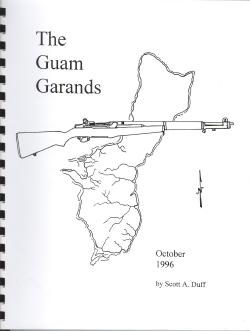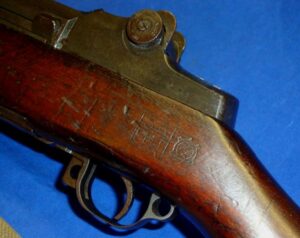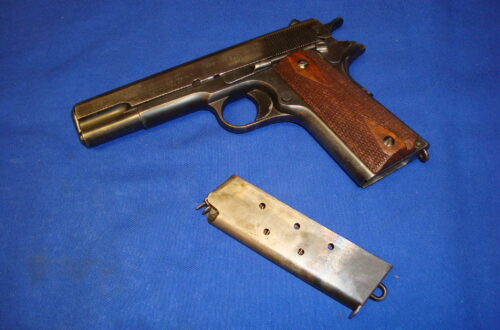
We Wish They Could Talk – Sometimes They Do (Part 1/2)

Over the many decades I have been a collector and dealer of US martial arms, I have often heard fellow collectors say “I wish this rifle (or pistol) could talk.” Or “I wonder who carried it and where it has been.” In a few very rare cases we have been able to answer at least part of those questions. The 30 Guam Garands are one unique example. These 30 M1 rifles were given to the Guam Security Patrol Force after the battle in 1944 and eventually ended up with the Guam Police Department. In 1994 that Department wanted to update their inventory of small arms. A trade was made with a US FFL dealer. This was easily done as Guam is a US Territory, so no importation hoops to jump through and no import stamp was required. These 30 Garands are in their World War II, battle of Guam configuration and condition. So we know where they were used and we know they were most likely used by the 3rd Marine Division. The photographs are of Guam Garand #8, SA s/n 1157822. To learn more about the details of these interesting 30 Guam Garands we offer for sale on our website The Guam Garand Monograph which contains the entire story in detail and includes data sheets on all 30 rifles.

One would think that there would be a record of who was issued what serial number weapon during World War II and that the further back in time you go the more difficult this would become. Actually the exact opposite is true. There are nearly no records preserved today of a serial number US weapon issued to any given individual. The reasons are twofold. Number one is that with the tens of millions of small arms issued to US troops throughout World War II that volume of record keeping, pre computers, would have been difficult to nearly impossible to track, especially when you take into account battle damage to the weapon or a wounded soldier or sadly a KIA soldier. The last thing the medics or his squad mates were concerned about was recovering his exact weapon and turning it for record keeping purposes. The second reason is that soldiers often dropped their issued weapon and grabbed a battlefield pickup. As an example, my Father-in-law was in the 11th Airborne and fought in the Philippines, told me that he was often issued and M1 or M1A1 carbine; he was not a fan of them. He would exchange his issued Carbine for a battlefield pickup M1 Garand at his first opportunity. Our book US Infantry Weapons in Combat details many other stories like his. In addition, if any partial records were kept they were most likely disposed of when the war ended. There was no one year tour of duty during World War II. You were in it for the duration. Unless grievously wounded, most soldiers spent years overseas in combat theaters. They wanted to go home.
BY SCOTT DUFF
Get this book! US Infantry Weapons in Combat



